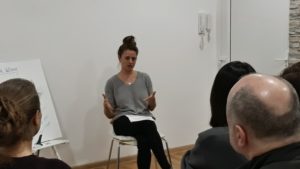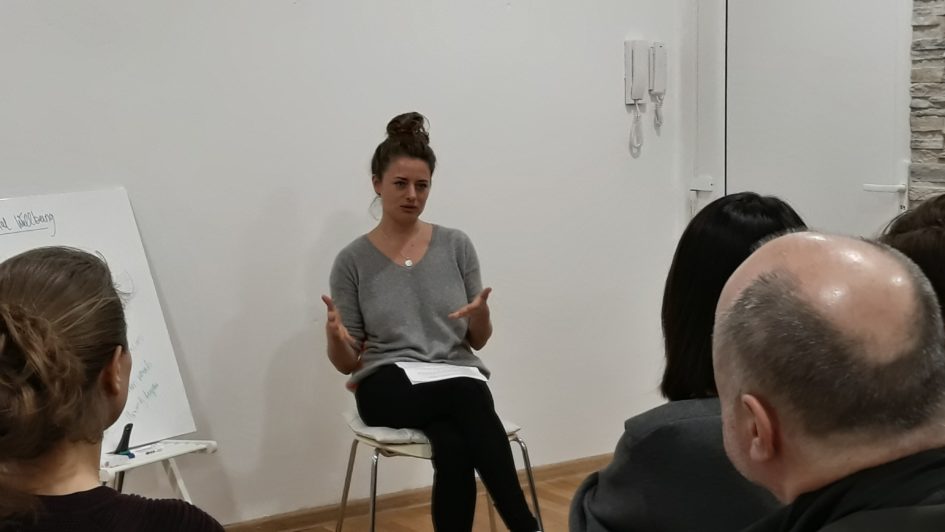We invited our colleague Jeanny Gering from The Dart Center for Journalism and Trauma to host an open workshop in Hostwriter’s Berlin office with practical tips and advice on how journalists can take steps to deal with traumatic experiences or images they’re exposed to on the job.

Jeanny Gering from The Dart Center for Journalism and Trauma
Approximately 20 people attended the 1.5-hour event, which was also live-streamed on Facebook. We exchanged and shared our own experiences and asked questions about ways to handle things like images shared with us on social media, or interviews with people who have themselves gone through a traumatic experience.
Gering said that trauma affects us on three levels: biologically, psychologically and sociologically. After a traumatic event, you often feel like you’re “not quite here” due to the dissociation that happens, or you get really agitated over things. Symptoms of trauma can include sleeplessness, irritability or depression. She also talked about how trauma can also be experienced 2nd hand – called “vicarious trauma” – for example, when you are exposed to graphic images at work. With vicarious trauma, the body reacts the same as if you were actually there. Which means you don’t have to be on the ground, you can get traumatized just sitting in your newsroom behind the desk, doing your work!
Advice from Gering included recommendations that we practice self-care in order to nurture our own resilience and ability to bounce back – such as after a long shift in the newsroom where you were exposed to graphic images. Types of self-care include meditation, exercise and taking enough breaks – for instance, if you are transcribing an interview or editing video footage of a traumatic event.
Another tip Gering shared was to have a way to prepare in advance, to set up a type of psychological shield and to recognize when you are feeling like you are starting to lose control. She said to mentally check in with yourself and try to reconnect your mind with your body and its senses. The dissociation caused by trauma breaks the connection between mind and body, so it’s important to be sure to reconnect them. There was a tip from the audience that it can also help if you turn down the audio when watching videos, because audio can embed itself much deeper into your subconscious than the images.
Regarding journalists interviewing people who’ve experienced trauma, Gering said we should try to give the interviewee a sense of control – specifically to help them feel like they have some sort of control over their situation. For example, we can tell the interviewee ahead of time what we will be asking – showing them an overview of the type of questions – and asking if those questions are okay. We should also explain where the piece will appear and ask the interviewee if that’s okay. Consideration should also be taken as to where the interview will happen, since a space that is associated with the traumatic event may traumatize the interviewee even more.
You can watch the entire video of the livestream on Hostwriter’s Facebook page.
Handouts from the DART Center:
- Maintaining Boundaries with Sources, Colleagues & Supervisors
- Managing Stress & Trauma on Investigative Projects
Hostwriter plans to offer more events for journalists in the future. To find out about upcoming events, please follow us on Facebook.

